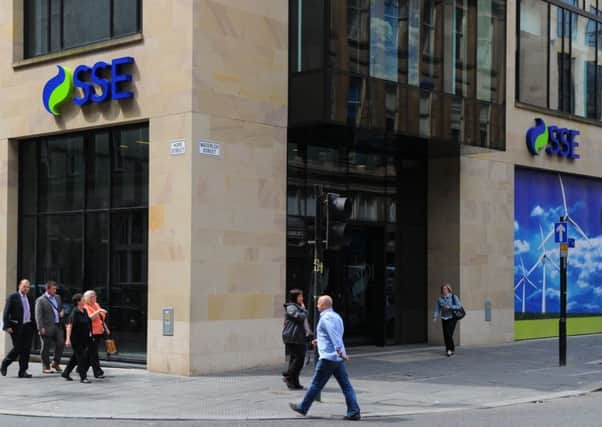SSE to return £500m to investors following SGN sale
This article contains affiliate links. We may earn a small commission on items purchased through this article, but that does not affect our editorial judgement.


The Perth-based utility announced the share buyback scheme as it reported a 13.3 per cent slide in adjusted pre-tax profits to £475.8m for the six months to the end of September, but said this was still the second-highest first-half profit it has delivered.
SSE stands to gain £600m from last month’s sale of a 16.7 per cent interest in SGN – which serves three-quarters of Scottish households – to the Abu Dhabi Investment Authority. It retains a 33.3 per cent stake in the business, with the remainder held by Borealis Infrastructure Management and Ontario Teachers’ Pension Plan.
Advertisement
Hide AdAdvertisement
Hide AdThe group also announced a 1.9 per cent increase in its interim dividend to 27.4p a share, to be paid on 17 March, and said it remains on track to deliver annual dividend increases that keep pace with the retail prices index measure of inflation.
SSE said its adjusted earnings per share tumbled by 25.5 per cent to 34.2p, reflecting “lower profits in wholesale and retail and an unusually high proportion of hybrid bond coupon payments made in the first half of the financial year”.
Energy supply profits dropped to £47.1m, from £73.8m a year earlier, as its total number of energy customer accounts across Great Britain and Ireland fell from 8.21 million to 8.14 million during the six-month period. However, SSE said the decline represents the smallest net decrease in its customer account numbers since 2013.
It said: “The markets for energy supply in GB and Ireland both continue to be intensely competitive. In GB, for example, political, regulatory and market factors are all contributing to the rapid growth of new market entrants and increasing levels of customer engagement in the market, meaning there are now more than 40 suppliers operating in the GB market alone.”
Good news came for the company earlier this week after the energy watchdog dropped a case against SSE, having accused the firm of abusing its market position and stifling competition in the electricity connections market.
The Ofgem investigation, which was launched nearly two years ago, raised concerns about the process by which SSE was connecting new sites like housing developments to its distribution network, which could have prevented customers from accessing alternative and independent providers.
But the regulator decided to scrap the inquiry after SSE made a series of commitments, including plans to standardise quotations, improve IT systems and train staff in compliance and competition law. It will no longer issue a ruling over whether competition regulations were breached.
• An under-construction wind farm in Argyll & Bute has changed hands in an £18.5 million deal, writes Perry Gourley.
Advertisement
Hide AdAdvertisement
Hide AdThe 11-turbine Freasdail wind farm on the Kintyre peninsula has been bought by The Renewables Infrastructure Group (Trig), a listed investor in green energy projects.
The 22.5-megawatt (MW) onshore wind project has been developed by Renewable Energy Systems which will complete the final stages of building before commissioning due in the first quarter of next year. The project has a 15-year power purchase agreement in place with Vattenfall Energy Trading.
So far in 2016, Trig has invested in 17 wind and solar projects in the UK and France and now has 53 projects with a generating capacity of more than 700MW. The company now generates electricity equivalent to the amount required to power approximately 400,000 homes.
